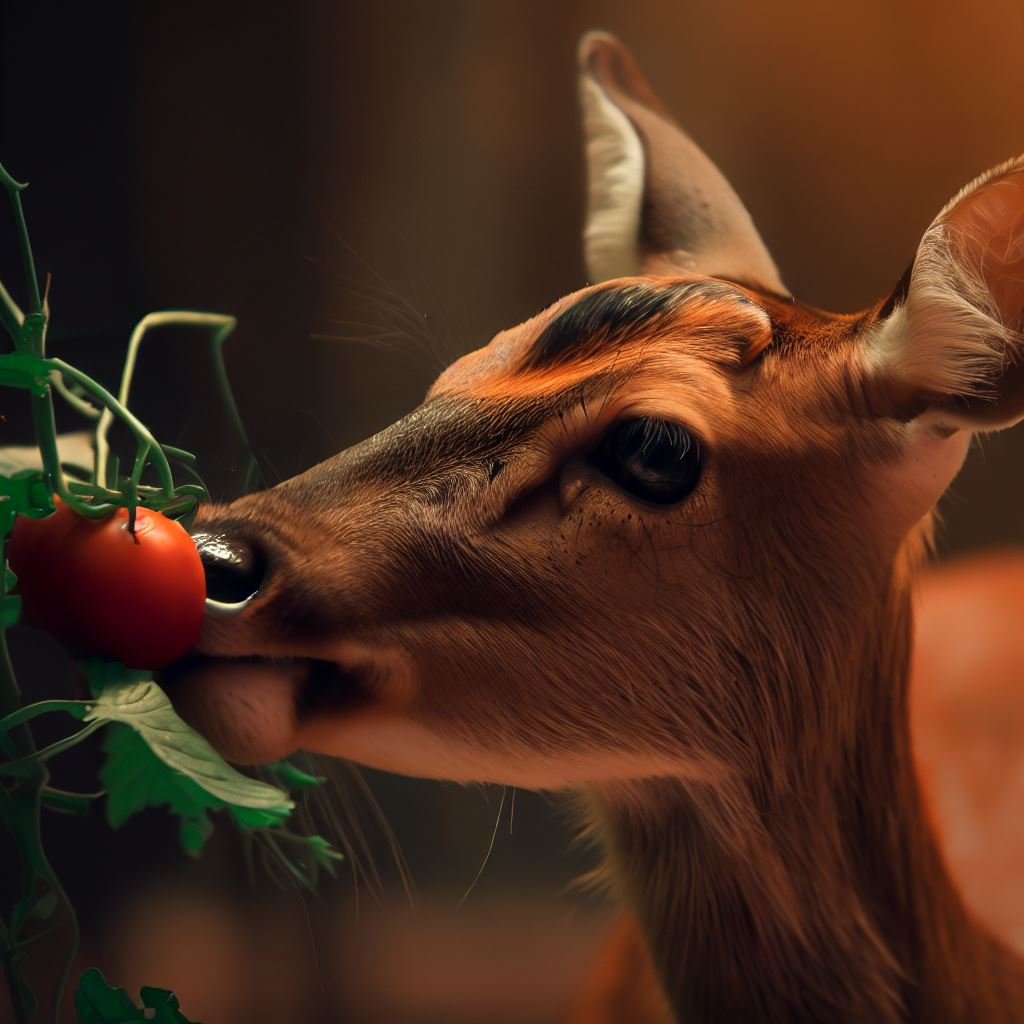Table of Contents
Do Deer Eat Tomato Plants? Surprising Reason
If you are a gardener who loves growing tomatoes, you may have encountered a common problem: deer eating your tomato plants. Deer are herbivores that feed on a variety of plants, including tomatoes. They can cause significant damage to your garden by devouring the leaves, stems, and fruits of your tomato plants. In this article, we will explore why deer eat tomato plants, how to identify deer damage, and how to prevent deer from eating your tomato plants.
Do Deer Eat Tomato Plants?
- Yes Deer do eat tomato plants
Why Do Deer Eat Tomato Plants?
Deer eat tomato plants because they are hungry and opportunistic. Deer need to consume a lot of food to stay healthy and survive. They can eat up to 8% of their body weight per day, which means that a 150-pound deer can eat about 12 pounds of food per day. Deer prefer to eat tender, green, and succulent plants, such as grasses, clovers, and forbs. However, they will also eat other types of plants, such as fruits, nuts, acorns, and vegetables, depending on the season and availability.
Tomato plants are attractive to deer because they are rich in nutrients, such as vitamins, minerals, antioxidants, and water. Tomatoes also have a sweet and tangy taste that deer may enjoy.
However, tomato plants are not good for deer because they contain a toxic compound called solanine. Solanine is found in the green parts of the tomato plant, such as the leaves, stems, and unripe fruits. Solanine can cause gastrointestinal and neurological problems in deer if consumed in large amounts. Therefore, deer usually eat the leaves and stems of tomato plants more than the fruits.

How to Identify Deer Damage | Do Deer Eat Tomato Plants?
Deer damage can be identified by looking at the signs and symptoms of your tomato plants. Some of the common signs and symptoms of deer damage are:
- Browsing: Browsing is the act of eating the leaves and stems of plants. Deer browse on tomato plants by biting off the tips or sides of the leaves and stems. They leave behind jagged or torn edges on the plant parts. They may also strip off the bark or peel off the skin of the stems.
- Trampling: Trampling is the act of stepping on or crushing plants. Deer trample on tomato plants by walking over them or lying down on them. They leave behind flattened or broken plant parts. They may also create trails or paths in your garden where they frequently walk or rest.
- Droppings: Droppings are the feces or excrement of animals. Deer droppings are small, round, and dark pellets that are usually clustered together in piles or scattered around your garden. They indicate the presence and activity of deer in your area.
- Tracks: Tracks are the footprints or marks left by animals on the ground. Deer tracks are hoof-shaped impressions that are about 2 to 3 inches long and 1 to 2 inches wide. They have two pointed toes that form a V-shape. They may also have dewclaws that form smaller impressions behind the toes.
We already discussed about this question Can Budgies Eat Tomatoes? which you can also read about.
How to Prevent Deer from Eating Your Tomato Plants
There are several methods that you can use to prevent deer from eating your tomato plants. Some of the most effective methods are:
| Strategy | Description |
|---|---|
| Fencing | Install a sturdy fence around your garden. |
| Deer-Resistant Plants | Choose deer-resistant plants alongside tomatoes. |
| Repellents | Apply deer repellents or natural deterrents. |
| Motion-Activated Lights | Use motion-activated lights to scare deer away at night. |
- Fencing: Fencing is the act of enclosing or surrounding your garden with a barrier that prevents deer from entering or reaching your tomato plants. Fencing can be made of different materials, such as wood, metal, wire, plastic, or mesh. Fencing should be at least 8 feet high and buried at least 1 foot deep to deter deer from jumping over or digging under it.
- Repellents: Repellents are substances that deter deer from eating your tomato plants by making them smell bad, taste bad, or feel uncomfortable. Repellents can be natural or synthetic, such as garlic, hot pepper, soap, urine, blood, hair, eggs, vinegar, ammonia, or commercial products. Repellents should be applied regularly and after rain to maintain their effectiveness.
- Scare devices: Scare devices are objects or machines that scare deer away from your tomato plants by making noise, light, or motion. Scare devices can be simple or complex, such as scarecrows, flags, balloons, wind chimes, radios, lights, sprinklers, alarms, or motion-activated sensors. Scare devices should be moved or changed frequently to prevent deer from getting used to them.

Key Takeaways | Do Deer Eat Tomato Plants?
Deer eat tomato plants because they are hungry and opportunistic. They can cause significant damage to your garden by devouring the leaves, stems, and fruits of your tomato plants. Here are some key points to remember when dealing with deer:
- Deer prefer to eat tender, green, and succulent plants, but they will also eat other types of plants, such as fruits and vegetables, depending on the season and availability.
- Tomato plants are attractive to deer because they are rich in nutrients and have a sweet and tangy taste. However, tomato plants are not good for deer because they contain a toxic compound called solanine, which can cause gastrointestinal and neurological problems in deer if consumed in large amounts.
- Deer damage can be identified by looking at the signs and symptoms of your tomato plants, such as browsing, trampling, droppings, and tracks.
- Deer can be prevented from eating your tomato plants by using methods such as fencing, repellents, and scare devices. These methods should be used in combination and adjusted according to the situation and the behavior of the deer.


